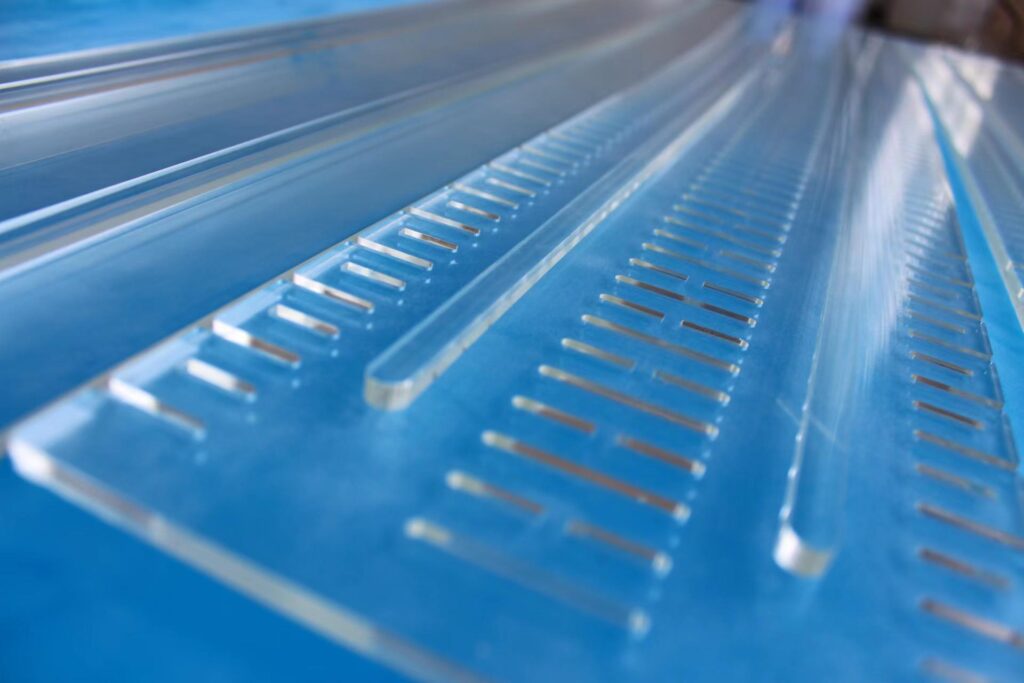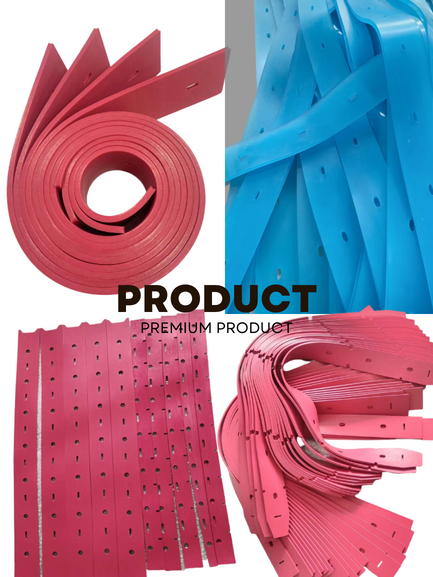If you’re in the cleaning industry, you know that floor squeegee blades are essential tools for maintaining clean and safe environments. Floor squeegee blades are available in different materials, shapes, and sizes, making them suitable for different applications. In this post, we’ll focus on rubber squeegee blades for floor machines and explore the different types of floor squeegee blades and their applications.
Types of Rubber Squeegee Blades
Straight Squeegee Blades
Straight squeegee blades are the most common type of squeegee blades and are suitable for a wide range of cleaning applications. They are available in different materials, including natural rubber, neoprene, and urethane, each with unique properties that make them suitable for different surfaces and environments. Straight squeegee blades are suitable for use on smooth surfaces, such as concrete, terrazzo, and vinyl flooring.
Curved Squeegee Blades
Curved squeegee blades are designed to conform to the contour of the floor and provide a more thorough cleaning. They are suitable for use on uneven surfaces, such as tiled or grouted floors. Curved squeegee blades are available in different materials, including natural rubber, neoprene, and urethane, each with unique properties that make them suitable for different surfaces and environments.
V-Notch Squeegee Blades
V-notch squeegee blades are designed for use on uneven surfaces, such as quarry tile or grouted floors, and can effectively remove liquids from small crevices. The V-shaped notch in the blade allows for better liquid pickup and prevents debris from being pushed around. V-notch squeegee blades are available in natural rubber, neoprene, and urethane.
Combination Squeegee Blades
Combination squeegee blades are designed to provide both scrubbing and squeegee functions in one tool. They are suitable for use on rough surfaces, such as concrete or textured tile floors, and can effectively remove dirt and debris while leaving the surface clean and dry. Combination squeegee blades are available in natural rubber, neoprene, and urethane.
Applications of Rubber Squeegee Blades
Wet Vacuuming
Rubber squeegee blades are commonly used for wet vacuuming applications, where they are used to remove liquid spills and other debris from the floor.
Floor Stripping
Rubber squeegee blades are also used for floor stripping applications, where they are used to remove wax, dirt, and other buildups from the floor. They are suitable for use on a wide range of surfaces, including concrete, terrazzo, and vinyl flooring.
Floor Cleaning
Rubber squeegee blades are commonly used for floor cleaning applications, where they are used to effectively remove dirt and debris from the floor.
Water Recovery
Rubber squeegee blades are also used for water recovery applications, where they are used to effectively remove water from the floor after cleaning or flooding. They are suitable for use on a wide range of surfaces, including concrete, terrazzo, and vinyl flooring.
Choosing the Right Rubber Squeegee Blade for Your Floor Machine
Choosing the right rubber squeegee blade for your floor machine is essential to achieve optimal cleaning results. When selecting a rubber squeegee blade, consider the type of surface you’ll be cleaning, the type of liquid or debris you’ll be removing, and the environment in which you’ll be working.
- For smooth surfaces, such as concrete or vinyl flooring, straight squeegee blades are the best choice. Natural rubber is a popular material for straight squeegee blades because it is durable and provides excellent wiping action. Neoprene and urethane blades are also suitable for straight squeegee applications, with neoprene being the most resistant to chemicals and oils.
- For uneven surfaces, such as tiled or grouted floors, curved squeegee blades are the best choice. They conform to the contours of the floor and provide a more thorough cleaning. Natural rubber and neoprene blades are commonly used for curved squeegee applications, with neoprene being more resistant to chemicals and oils.
- For small crevices and uneven surfaces, V-notch squeegee blades are the best choice. They provide better liquid pickup and prevent debris from being pushed around. Natural rubber and neoprene blades are commonly used for V-notch squeegee applications, with neoprene being more resistant to chemicals and oils.
- For rough surfaces, such as concrete or textured tile floors, combination squeegee blades are the best choice. They provide both scrubbing and squeegee functions in one tool and can effectively remove dirt and debris. Neoprene and urethane blades are commonly used for combination squeegee applications, with urethane being the most durable and resistant to chemicals and oils.
Conclusion
Rubber squeegee blades for floor machines are essential tools for maintaining clean and safe environments. By understanding the different types of squeegee blades and their applications, you can choose the right tool for the job and achieve optimal cleaning results. When selecting a rubber squeegee blade, consider the type of surface you’ll be cleaning, the type of liquid or debris you’ll be removing, and the environment in which you’ll be working. By choosing the right rubber squeegee blade for your floor machine, you can ensure a more thorough cleaning and prolong the life of your equipment.



